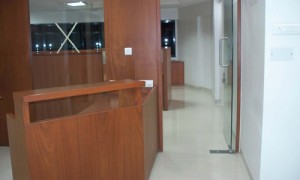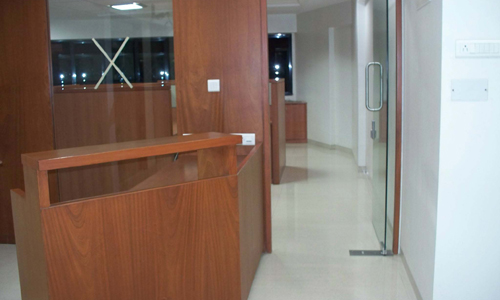 Track2Realty: DTZ annual office space forecast says 21% increase in take-up is expected. Overall take-up stood at 4.80 million sq ft for Q1, a sharp drop of circa 29% from previous quarter. Mumbai witnessed the highest take-up of 1.25 million sq ft, an increase of 3% q-o-q.
Track2Realty: DTZ annual office space forecast says 21% increase in take-up is expected. Overall take-up stood at 4.80 million sq ft for Q1, a sharp drop of circa 29% from previous quarter. Mumbai witnessed the highest take-up of 1.25 million sq ft, an increase of 3% q-o-q.
This increase can be attributed to broad based transaction activity along with execution of several large size transactions of more than 50,000 sq ft. As a result, while IT/ITES and BFSI accounted for 40% of take-up, healthcare and manufacturing sectors accounted for another 35%. Kolkata continued to witness the sharpest fall of 61% q-o-q.
The demand is expected to pick up pace in next few quarters as most of the Indian markets are approaching the bottom of the rental cycle, there is a short term window for occupiers to lock in lease transactions to take advantage of historically low rentals before they resume their long term growth in 2014.
The total stock of commercial Grade A office space in India’s seven largest cities in Q1 stood at 400.52 million sq ft as compared to 394 million sq ft in the previous quarter, a marginal increase of 1.6%. Chennai witnessed the highest increase (of 3.3%) in stock q-o-q while Hyderabad witnessed the lowest q-o-q increase of 0.3%.
The overall level of new supply increased over the quarter by 13.5%.The total new supply in Q1 stood at 6.47 million sq ft as compared to 5.7 million sq ft in the previous quarter. Most of the new supply comprises projects that had been delayed in the last few quarters.
Out of the seven cities, Pune witnessed the highest increase (of 117.4%) in new supply q-o-q followed by Chennai at 33%. Kolkata witnessed the sharpest fall of 47.4% in new supply for the quarter followed by Hyderabad at 15.3%.
Overall availability increased by circa 3% q-o-q as a result of restrained take-up coupled with infusion of new supply. The total availability stood at circa 83.1 million sq ft in Q1. Chennai witnessed the highest increase of 14% q-o-q whereas Bengaluru witnessed sharpest moderate fall of 2.4% q-o-q with availability ratios at 22% and 13.4% respectively.
Anshul Jain, Chief Executive, DTZ India says, “The wait-and-watch stance continues to be the preferred strategy of the occupiers as they enter 2013. The subdued take-up reported in Q1 is a manifestation of the slow Indian economy coupled with a lacklustre global economy, particularly the Eurozone and the US. We expect the first half of 2013 to be subdued. Our annual forecast for growth in take-up for 2013 is a 12% increase over 2012. Majority of this we expect to come to fruition in the second half of 2013.”
Prime rents across all the seven cities, except for Delhi NCR, remained unchanged throughout the quarter. Delhi NCR witnessed a marginal increase of 1.4% in rents due to the increase in maintenance cost of the buildings as a result of persistently high inflation.
For past one year, the landlords had not passed on the increase in maintenance cost to the occupiers in order to retain as well as attract occupiers given the challenging economic environment. Prime rents across all seven cities except for Mumbai are expected to remain stable in short term and increase thereafter. Mumbai is expected to witness a marginal drop in prime rent due to continued preference of occupiers towards off-CBD and suburban micro markets.
The delivery timelines of new projects continued to revise as a result of economic slowdown and increase in construction cost. The latest development schedule for 2013 indicates approximately 44.6 million sq ft of new supply coming on stream across the seven cities as opposed to 53.3 million sq ft estimated earlier.
The decrease in 2013 development pipeline estimates is due to the rollover of projects slated for completion in 2013 to 2014. The phenomena of extension in delivery timelines is expected to continue in midterm until the economic environment becomes more conducive. Mumbai followed by Bengaluru and Delhi NCR will constitute 25%, 22% and 20% respectively of the total new supply in 2013.





